Hands up all those who’ve never owned or ridden a BSA Bantam! Even if your arm’s in the air, you probably know someone who did or still does! With the help of the BSA Bantam Club and photos from the Mortons Archive, Pete Kelly recounts the history of one of the most popular lightweights of all time.
Hands up all those who’ve never owned or ridden a BSA Bantam! Even if your arm’s in the air, you probably know someone who did or still does!
With the help of the BSA Bantam Club and photos from the Mortons Archive, Pete Kelly recounts the history of one of the most popular lightweights of all time.
Enjoy more Old Bike Mart reading every month.
Click here to subscribe & save.
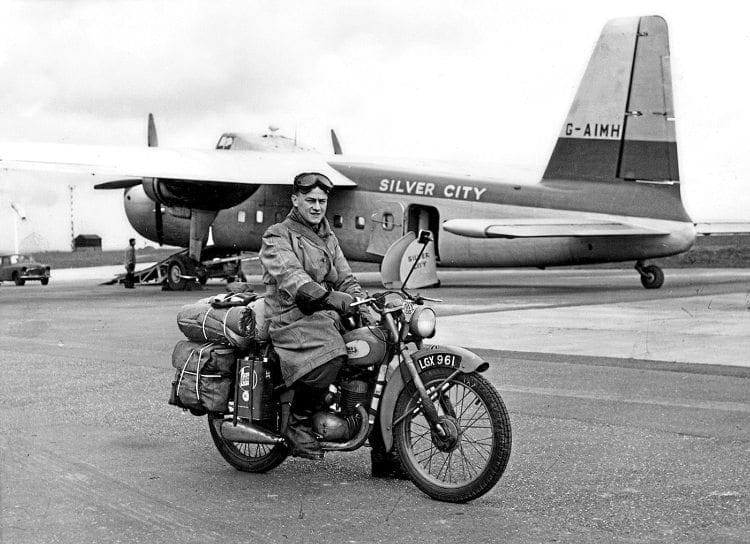
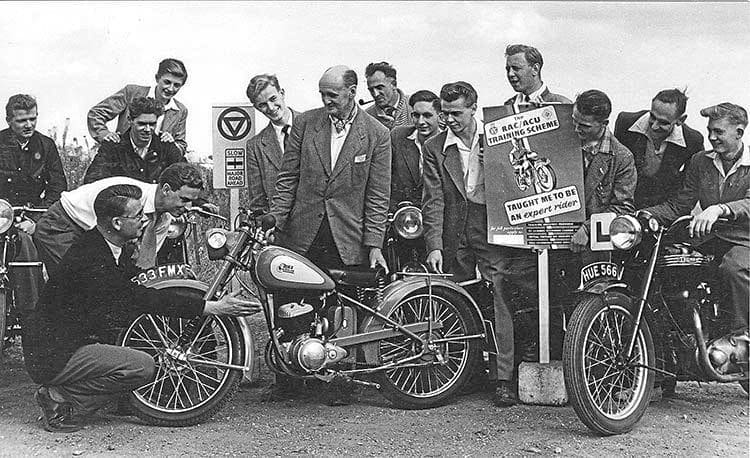
When the internet was a far-distant dream (or nightmare, according to your point of view) and relatively few people had a telephone, the quickest way to send a message was by Post Office telegram.
The ideal machine for delivering these brief strips of messages, particularly in built-up areas, was the simple, light and reliable BSA Bantam, and over the years more than 4000 were delivered for this purpose.
As they buzzed around our streets, the bright red machines became a much-treasured British institution – and it was on one of them, at the age of 15 and with total disregard for the law, that I rode a motorcycle by myself for the very first time.

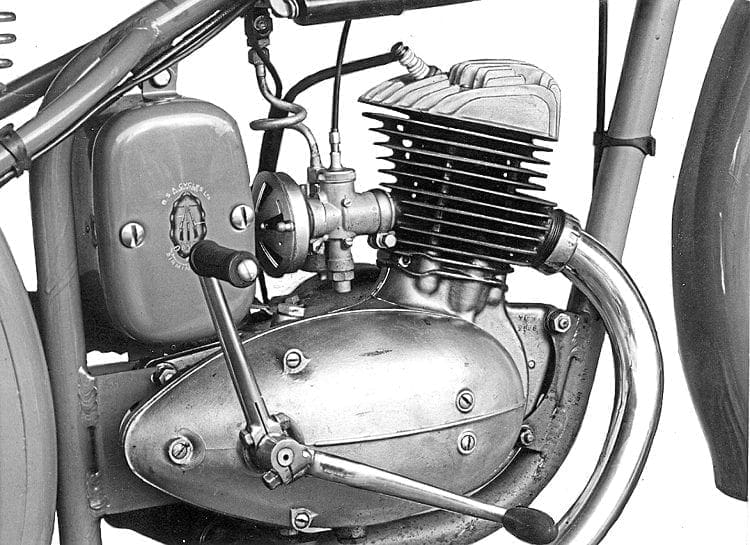
The invitation came from a friend who’d just become a telegram boy, and the brief but exciting excursion ended ignominiously in a bed of nettles.
Later in life, it was a second-hand 150cc D3 Bantam that took me to work during the week, into the countryside at weekends and on frequent evening rides across Lancashire to visit a girlfriend in Bury, where the sweet smell of caramel as I rode past Benson’s toffee works confirmed the factory’s slogan: “Something good from Bury”.
As every Bantam enthusiast knows, however, the BSA Bantam owes its origin to Germany’s DKW RT 125 two-stroke single, whose design was taken by the Allies as part of war reparations.
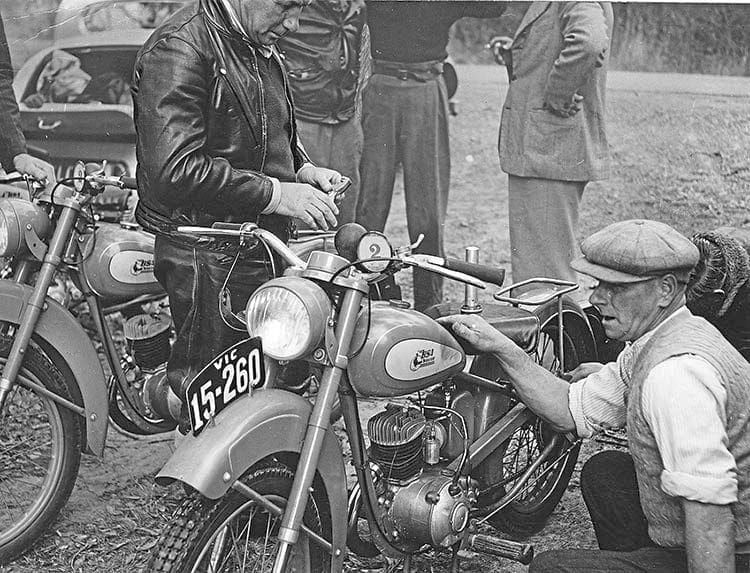
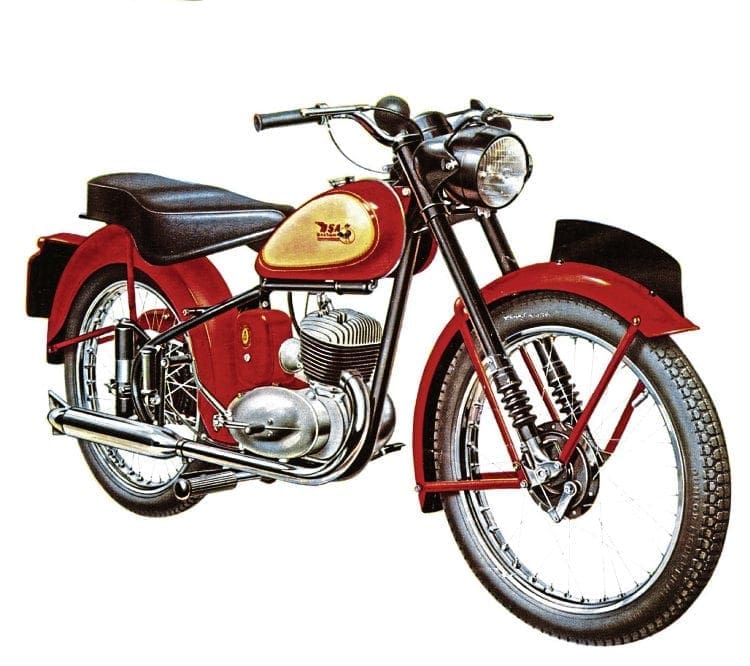
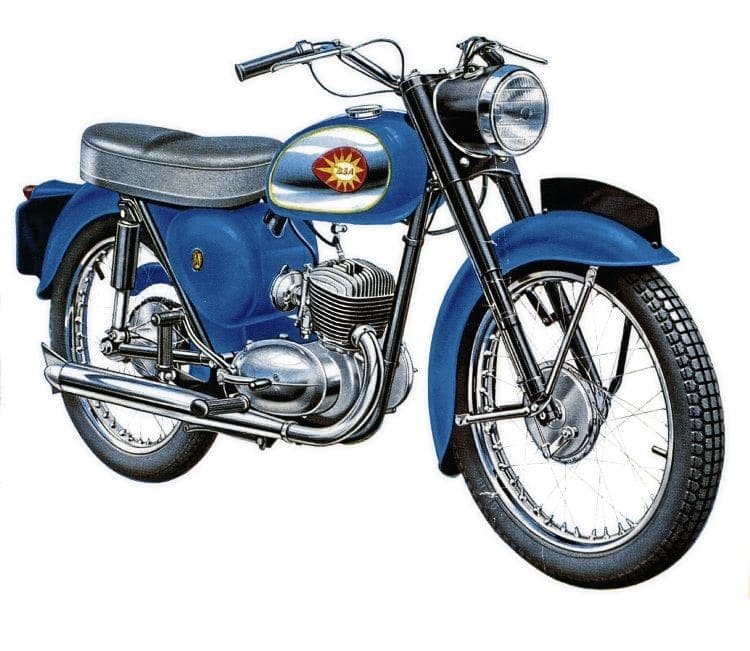
Although BSA changed the unit-construction engine’s layout to suit a right-foot gearchange control, little else deviated from the DKW design, and the Bantam proved popular right from its launch in 1948, when the first batches went for export only.
Customers could have any colour they liked as long as it was mist green, and the £60 machine had a solid rear end (compensated for by a sprung single saddle), telescopic front forks, a shapely fishtail silencer, well valanced mudguards, a rear carrier and direct electrics.
The carburettor was a simple Amal with an oiled-mesh air filter and choke.
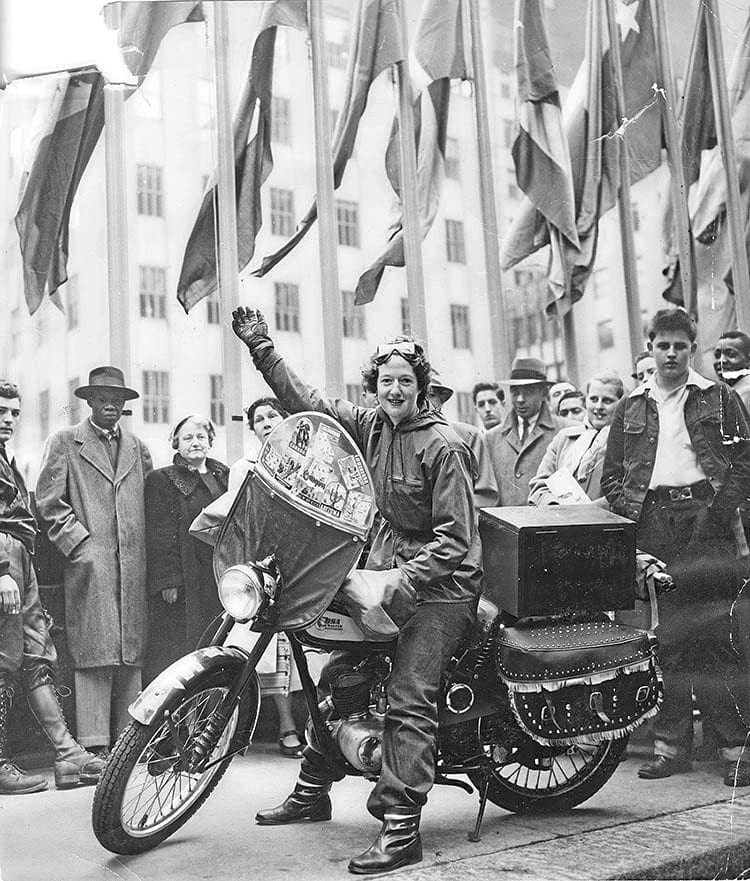

The Bantam could reach about 45mph and, with a careful hand on the throttle, stretch its precious petroil mixture to well over 100mpg – the perfect combination for austere times.
Whether bouncing along cobbled streets on the daily grind to work or, laden with rods and wicker baskets, wobbling along canal towpaths for a spot of weekend fishing, it was equally useful for work and play.
At the other end of the scale, sporting riders quickly saw the Bantam’s potential for trials and road racing, and were soon modifying the little machines (sometimes quite drastically!) to suit the latter especially.
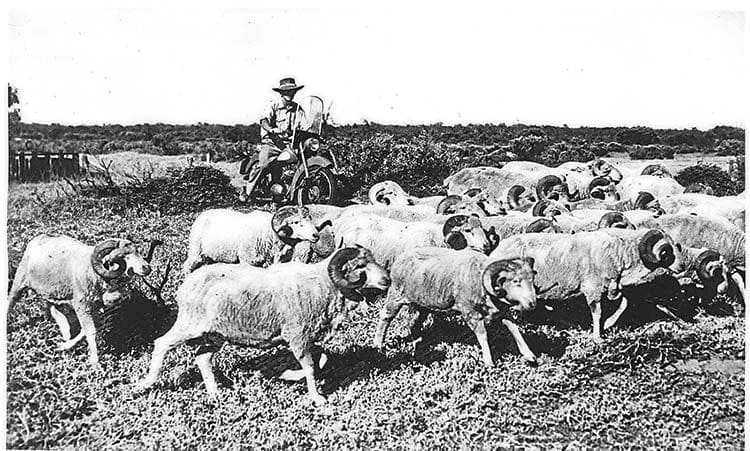
Adventurers started riding Bantams all over the world, including lady riders who appreciated the Bantam’s light weight of just 153lb.
By the time the 50,000th D1 Bantam was produced in May 1951, customers were already being offered a choice between rigid back end and plunger rear suspension, and development continued throughout the whole of the Bantam’s 23-year history.
In its original form, the Bantam was the perfect machine for the times, but as the years went by, the world around it changed dramatically from ration-book austerity to affluence and ever-higher expectations, and the ‘Japanese invasion’ proved the final nail in the coffin.
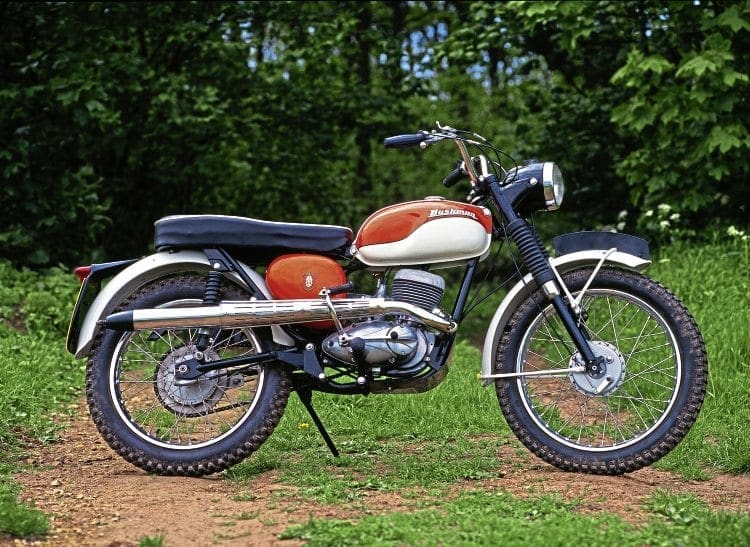
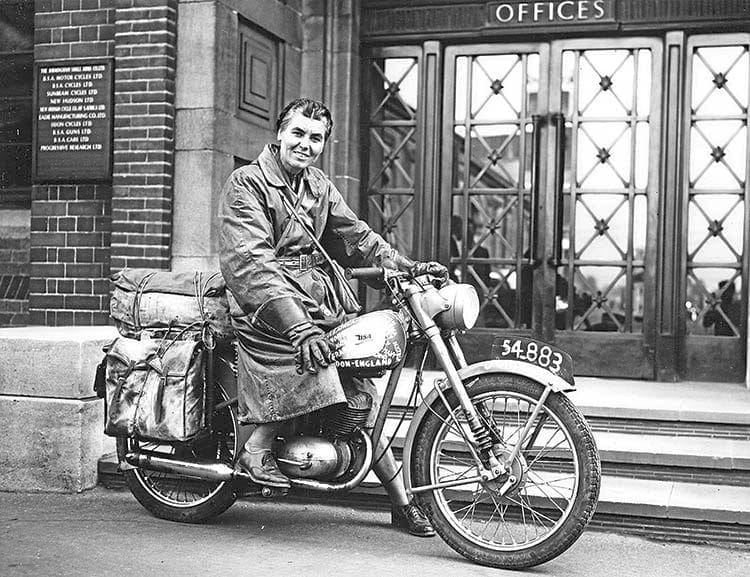
The first big step in the evolution of the evergreen lightweight came with the plunger-framed 150cc D3 Bantam Major towards the end of 1953.
The engine featured a more efficiently-finned cylinder barreland head (also applied to the D1) and the power output grew from 4 to 5.3bhp, upping the speed to 50mph.
A pillion seat was fitted and, in the first break from mist green, apart from a rare limited edition black-and-chrome BD1 model, it was offered in light grey, black or maroon with contrasting tank panels. After 1956, the D3 benefited from swinging arm rear suspension.
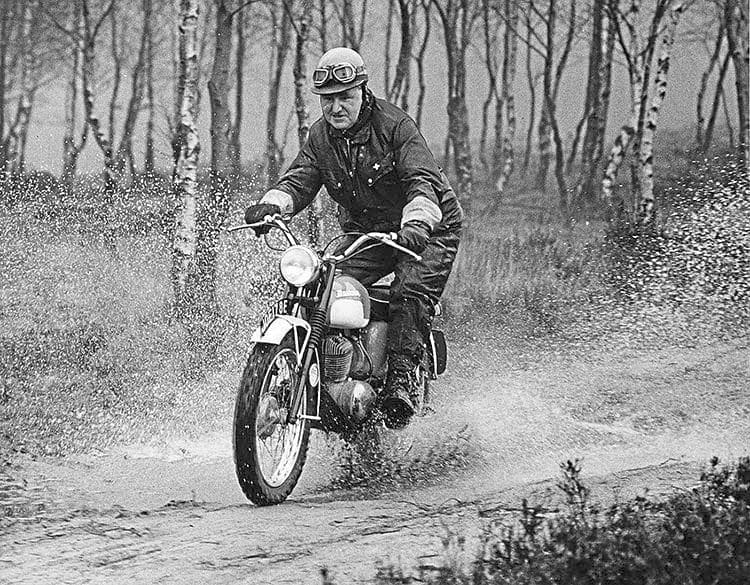
Catalogued only for the 1958 season, the first Bantam to feature an increased cylinder capacity of 175cc was the bored-out D5 Super.
A higher compression ratio of 7.4:1 gave the model 7.4bhp and a top speed approaching 60mph, and changes to its appearance included a fatter style of tank, chrome wheels and handlebars.
By 1960, BSA had adopted a clean ‘corporate look’ for machines from the 650cc A10 Super Rocket down to the new 175cc Bantam D7 Super.
Mechanically unchanged from the D5, this featured a new swinging arm frame, dome-section mudguards and a deeply-padded dual seat, and remained in production until 1966.

The following year the 175cc engine was tweaked again by fitting a larger carburettor, increasing the compression ratio to 8.65:1 and incorporating a squish band and better porting.
The flywheel magneto was replaced by an alternator, and the new modelwas launched as the 10bhp D10 – but it was stillheld back by that three-speed gearbox.
When four-speed gear clusters were finally added in 1967, two sparkling new models emerged – the D10 Sports in flamboyant red and chrome, and the high-clearance Bantam Bushman trail machine, which came in a startling orange and white colour scheme and boasted 19in wheels and 25% lower gearing.
The sports model boasted a flyscreen, hump-backed dual seat, chrome mudguards and a high-level exhaust with rider and passenger leg guards, and the previously nacelled front light was replaced by a separate chromed headlamp.
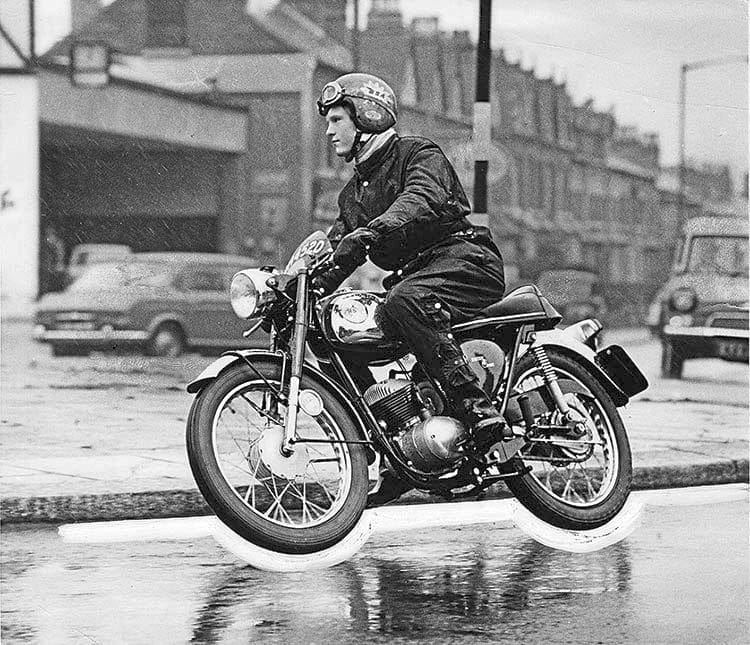
By now, though, time was running out for the BSA Bantam, which found itself desperately trying to play catch-up in a world awash with sophisticated Japanese machinery.
Virtually the last throw of the dice came with a trio of further uprated 175cc models in 1968/9 – the D14/4 Supreme, D14/4 Sports and D14/4 Bushman.
With an improved combustion chamber design, the engine was stretched to its limit with the application of yet more tuning and an even higher compression ratio, pushing the power output to 13bhp but compromising reliability.
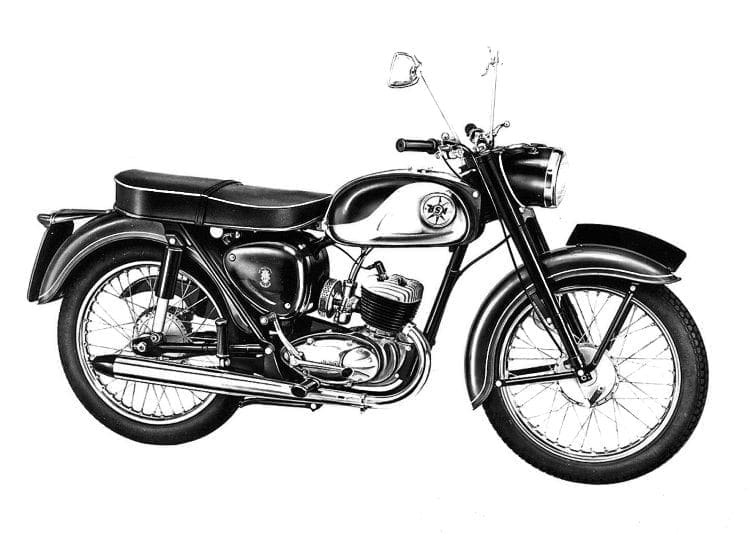
As the sun set over the once-mighty BSA empire, the very last Bantam was the D175 featuring Triumph Sports Cub front forks and a slightly reduced compression ratio of 9.5:1.
It still lacked an automatic lubrication system, and remained reliant upon petroil mixture right to the end.
However, the humble Bantam had established a place in our hearts, and is still fondly remembered and regularly used by classic bike enthusiasts today.




